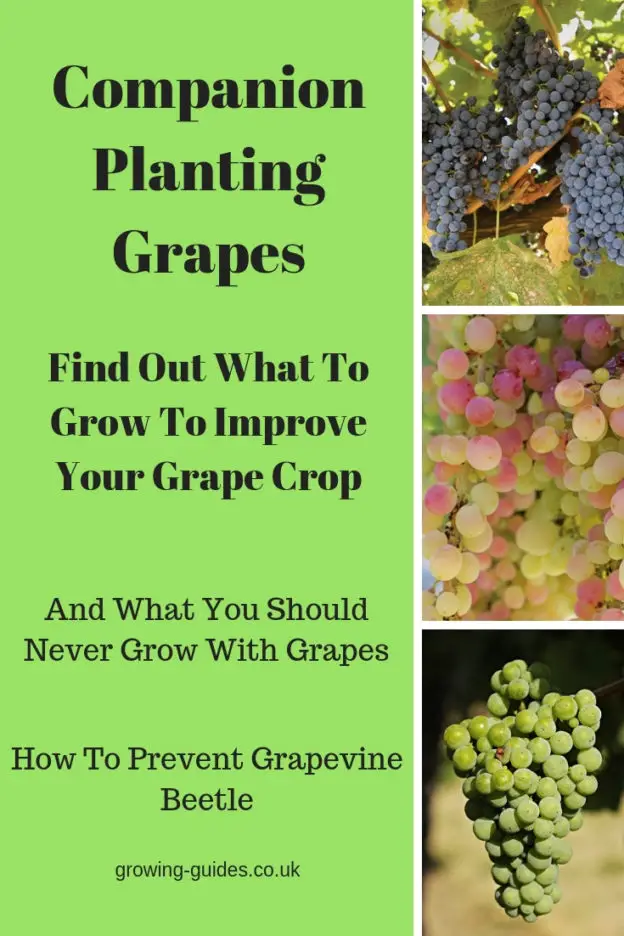For centuries growers have been companion planting grapes to improve their crops. The Greeks and the Romans too, so if it’s good enough for the classics then it’s good enough for me as well.
Companion Planting Grapes
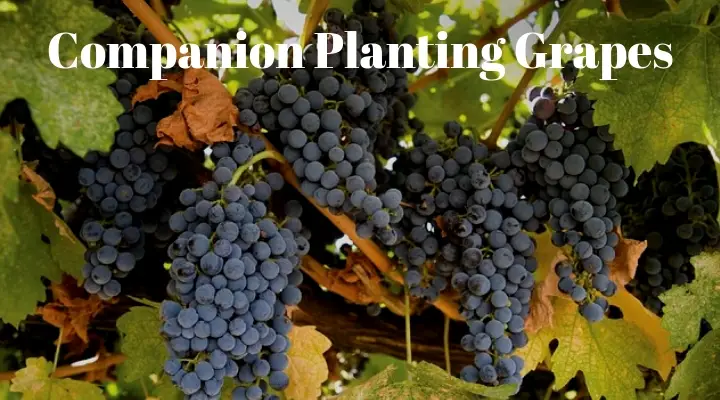
Grapes are not just a good source of fibre, they also contain many vitamins and minerals. But that’s not why they were popular in ancient times, no that was because they make great wine. That’s still true today but as with all plants the flavour, health and yield can be improved upon with companion planting.
What To Companion Plant With Grape Vines
There are a number of plants that are advantageous to grapes including:-
Hyssop

Grow Hyssop close to your grape vines to attract beneficial bees, whilst deterring most pest insects. Hyssop will also help to improve the flavour of your grapes.
Peas And Beans

Peas and Beans fix Nitrogen from the air so will not deplete the soil of this vital element. They will also grow around the stem of your grape vines thus saving space and helping to hide and protect the fruit from birds.
Clover
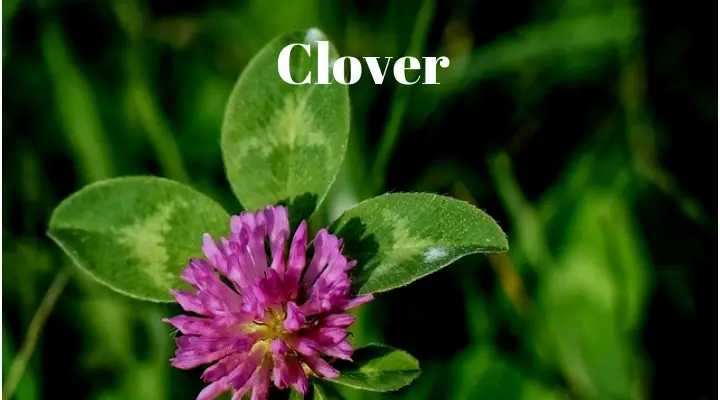
Clover is a member of the legume family (as are peas and beans) so will help to fix Nitrogen in the soil after it dies. It is also a good ground cover crop which will help to suppress weed growth. Clover will help improve the soil quality and as every gardener knows it’s the soil that makes the plant healthy.
The Rest Of The Bunch
All the other plants on the above list are all strong smelling plants and all have pest deterring properties and parasitic attracting qualities so the pests that aren’t put off will get predated.
Why Grow Roses With Grape Vines?

This question crops up every now and then, there doesn’t seem to be a definitive answer so here are the best I could find. Back in the day roses were planted at either end of a row of grapevines. One explanation is that even if the horses that drew the wagons along the rows couldn’t see the rows end they could smell the roses and knew it was time to turn.
The other and more likely reason is that roses and grapes share the same susceptibility to certain fungal diseases. The roses act as a type of early warning system to the presence of these fungal infections. Then action can be taken to prevent the disease from damaging the grape crop. Roses are more susceptible to Powdery mildew and downy mildew and will show signs of disease first allowing time to treat the grape vines and save the crop.
One of the best ways to prevent both of these mildews is to never water from above. Allow air to circulate around plants particularly if in poly tunnels or greenhouses.
Both grapevines and roses need constant moisture so that’s another reason to grow them together. Interestingly they both also benefit from being in companion with Lavender and Rosemary. If you decide to add lavender and rosemary give them at least 18-24 inches space from the roses and/or grapevines and of course they don’t require as much water.
Why Are Olives And Grapes Grown Together?
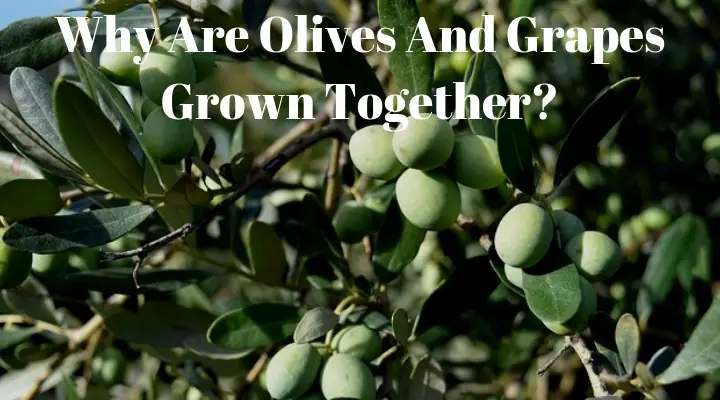
Keeping in mind where both plants originate, the answer to this question is easy to see. They both need similar conditions to grow, and are both harvested at roughly the same time. In Ancient times the olives were grown around the edges of the vineyards, maybe to protect the tender grapes from freak winds or storms.
Grapes and olives use the same presses to obtain juice/oil and as the grape harvest is usually finished just as the olives are ready to start pressing it makes sense to grow them together commercially.
What Not To Grow With Grapes
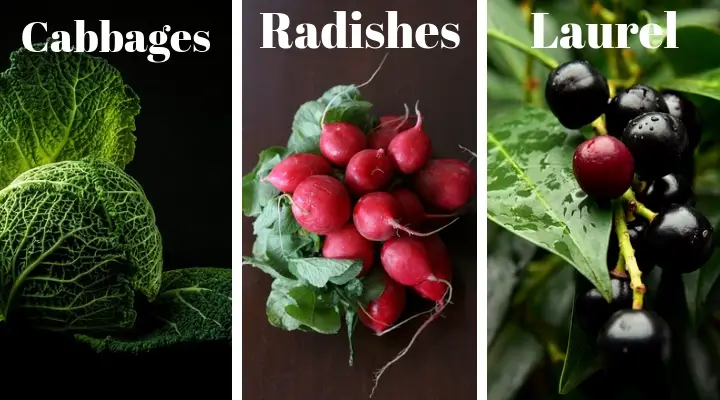
Everywhere I search all I can find is the advice that cabbages, radishes and Laurel should never be grown with grapes. I can’t however find any explanation for this but according to the Deipnosophistae of Atheneus written around 2,000 years ago, Wherever cabbages grow in a vineyard the wine produced is darker.
On the subject of this effect caused by the cabbage, Theophrastus also has written; he alleges that even the growing vine loathes the smell of cabbage.
From the Deipnosophistae of Atheneus translated by Penelope.uchicago.edu
So if it was good enough for probably the biggest wine experts ever it’s good enough for me. Cabbage and radish are both of course members of the brassica family so that probably explains it. No mention of other brassicas can be found in relation to grapevines.
Laurel is a highly poisonous plant originating from the Mediterranean and as it produces a black berry the reasoning behind not growing it anywhere grapes becomes obvious. Especially in the dark days of Rome “Et tu Brutae” and all that.
Grapevine Beetles
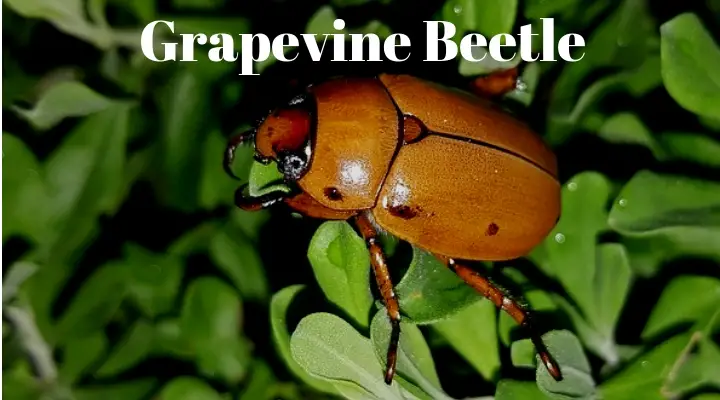
These relatives of the Scarab beetle are thankfully not a problem in the UK but if you live in the USA or Canada you’ll probably know all about them. They eat vine leaves and fruit and can be a serious problem. Keep the soil around your vines clear to prevent these beetles from hiding and breeding.
If you are unfortunate enough to have this problem, you can control them in the early stages by picking off individual beetles and drowning them in a bucket of soapy water. Once they have moved onto your vines fully more drastic action is needed.
Grapevine Beetle Spray
You can make an organic spray up to combat these pests. Just mix 2 chillies, 2 cloves of garlic, 2 drops of olive oil and 2 drops of washing up liquid. Strain the mixture into a spray bottle and completely coat each beetle with this spray,
This is best done early in the morning and hopefully once should be enough but if not repeat a few days later. I can’t stress enough that you really have to fully coat each beetle to kill it.
Why Companion Plant Grapes?
Given all the evidence of how beneficial growing plants in companion to aid plant growth and health, the question should really be why are you not companion planting grapes? The above techniques will improve the health, yield, and flavour of your grapes. These practises have been used for at least 2000 years with amazing results that have clearly stood the test of time.

